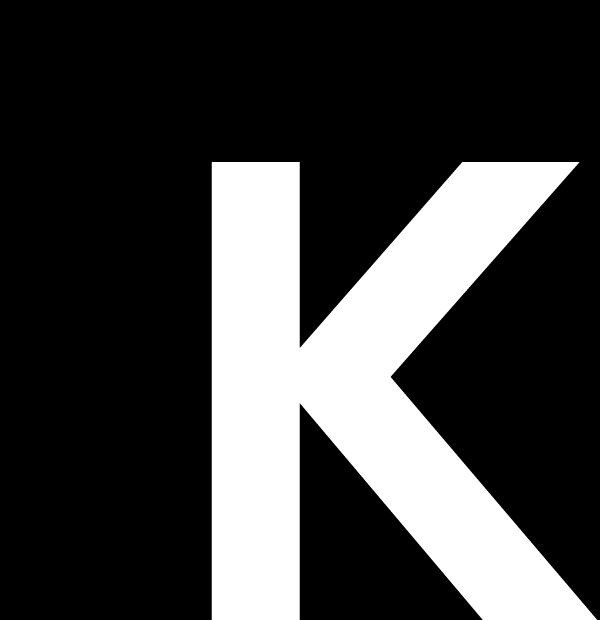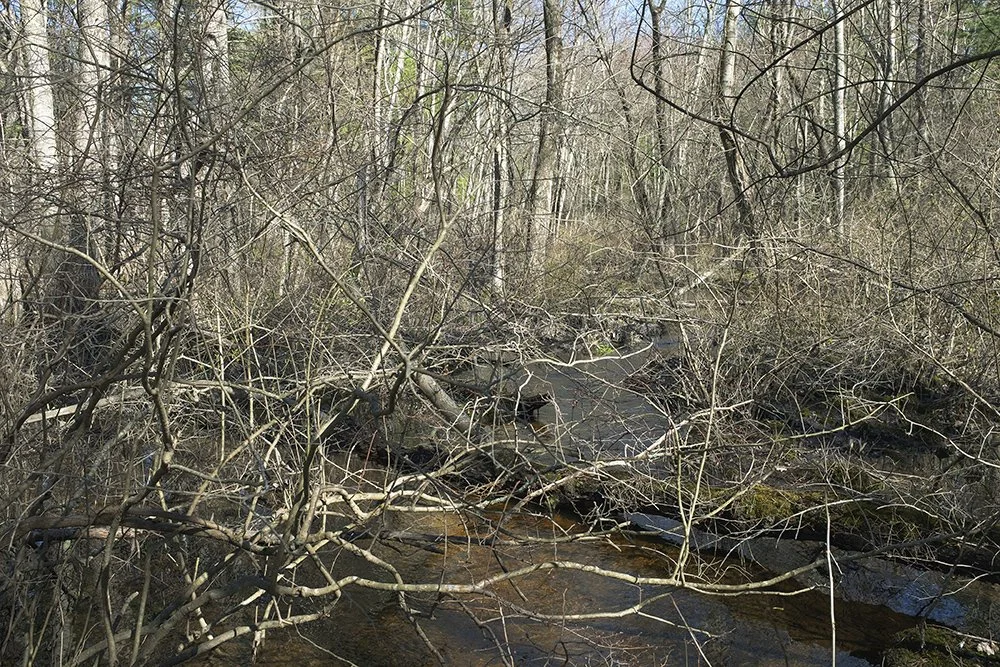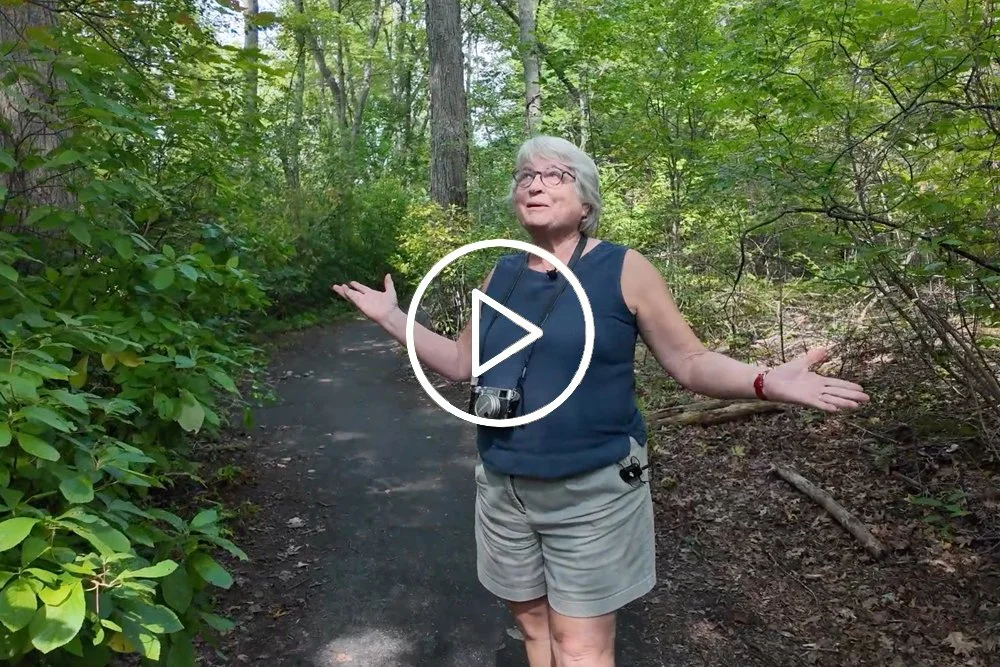Mary Lang: entangled
Main and Center Galleries
October 2 - November 2, 2025
Press Release
Opening Reception: Friday, October 3, 5-8pm
Sunday, Oct. 19, 2pm: Paying Attention: Encounters with the More-than-Human World, Mary Lang in conversation with author and urban naturalist Louise Miller.
Hassocky Meadow Trail, Ipswich River Wildlife Sanctuary, Ipswich, MA, Spring 2024
The “more-than-human world” acknowledges that the very real human world - the realm of our senses, breath, voice, cognition and culture - is but one facet of something vastly greater. All human life and being is inextricably entangled with and suffused by everything else. This broad commonwealth includes every inhabitant of the biosphere: the animals, plants, fungi, bacteria and viruses. It includes the rivers, seas, winds, stones and clouds that support, shake and shadow us.
– From Ways of Being by James Bridle
For decades my photographs had offered a feeling of space, often of groundlessness, of vast sky or open water, or at least an expansive horizon. Now, I am drawn to photograph tangled trees, vines, almost impenetrable thickets of growth. Why? What am I looking at? What am I trying to see? Or describe? This exhibition is the beginning of my answer to that question.
First, these images are an invitation to take in complexity, to not feel claustrophobic when confronted by layers of growth, of living things, of pathless thickets, of entangled vines and branches. They are an invitation to be awed and drawn to more detail than your mind can absorb. In this fraught world, we need to increase our capacity to handle complexity. Secondly, they are a metaphor for entanglement, a term ecologists and climate activists use to describe the complexity of modernity: everything we do, everything that all of us do, everything that the earth does, is completely entangled, interdependent, inseparable. As human beings living in the Anthropocene era, we can’t avoid our complicity in the harm to the planet.
Recently I learned of a different understanding of entanglement, entanglement as an expansion of recognition, awareness and attention. As a result, for the past year I have been on a crash course to learn about the “more-than-human” world, and the intelligence held there. My reading confirms dimensions far beyond what I sensed already. The world is vibrating, resonating in so many measurable ways with more-than-human intelligence. Bridle again: “Once you are prepared to pay attention, and that’s really, really key—once you are prepared to admit the possibility of this intelligence, it becomes almost instantly undeniable. And so the project, really, then is to integrate that awareness into our lives.”
I am not a botanist, nor an ecologist, biologist, geologist, network theorist, none of those. I am not even a wilderness hiker. I am a human being intent on loosening the binds of a limited understanding of who, what, and where I am on this planet at this time. A sentient being trying to understand the larger spiritual and ecological truths of entanglement. As a photographer I feel I have the responsibility to recognize and understand whatever it was that made me lift the camera to my eye and put a frame around an experience.
These photographs showed me something I hadn’t internalized as I walked through the woods. Only after the prints were up on my viewing board did I ask the question. Pointing my camera at the visual beauty of entangled branches, vines, weeds, grasses and trees made me ask - what am I looking at here? Which coincided with a question I have been asking myself as a human being and a meditator. What am I not noticing? What can’t I see completely? What deeper perception do I not understand because of how I think the world works, the preconceptions of a Western-educated individualized self? If these entangled landscapes raise questions about the evidence of more-than-human intelligence - tree time, mycorrhizal networks, deer paths, photosynthesis - what can a more empty and barren landscape tell us? Evidence of the more-than-human world is everywhere. Can we humans recognize the intelligence of “no ground” when we experience the vastness of the sky?
One does not have to be a scientist or botanist to see the world in this way. The “more-than-human” world suggests a way of seeing which overrides our human tendency to separate ourselves from the natural world. Indigenous peoples and bodhisattvas experience a world completely marked by the understanding of interdependence. Mystics, poets, shamans, and everyday wanderers have moments of transcendence, when the kaleidoscope pieces fall into place and transport us out of our day-to-day lives. It is only our attachment to our solid selves that keeps us separate.
Awareness of the more-than-human world, the entanglement that suffuses our own consciousness, once we begin to recognize it and pay attention to it, is not limited to transcendence. It can be the foundation of how we live each day. We can’t not notice it: our very being is inextricably entangled with everything else, in a way that feels true. For myself, I am finding that this awareness helps with the overwhelm of modernity and the climate grief that haunts me. I am letting my photographs show me the way.
Artist Bio
Mary Lang has been a member of Kingston Gallery for 20+ years, and has served as director twice during those years. She was included in the 2004 DeCordova Annual Exhibit and was a recipient of an artists Grant-in-Aid award from the St. Botolph Club Foundation in 2006. She has been an artist-in-residence at Crater Lake National Park in Oregon and at the J. Alden Weir Farm National Historic Site in CT. Her work has been reviewed in The Boston Globe and Art New England; her 2014 one-person retrospective exhibit, Like Water, at the Trustman Gallery at Simmons College was reviewed by Mark Feeney. Her photographs are included in collections at the Boston Museum of Fine Arts, the Fogg Museum at Harvard, the DeCordova Sculpture Park and Museum, and the Fidelity Corporate Collection, among others, and in many private collections. She holds a Master of Fine Arts in Photography from Pratt Institute and a Bachelors of Arts from Smith College. She teaches meditation and Shambhala Training and Buddhism at the Boston Shambhala Center in Brookline. The Bottom of the Sky, a 60-page book of photographs and haiku, in collaboration with poet David Rome, is available on lulu.com.
Studio Visit with Mary Lang
Video by: Phyllis Famiglietti
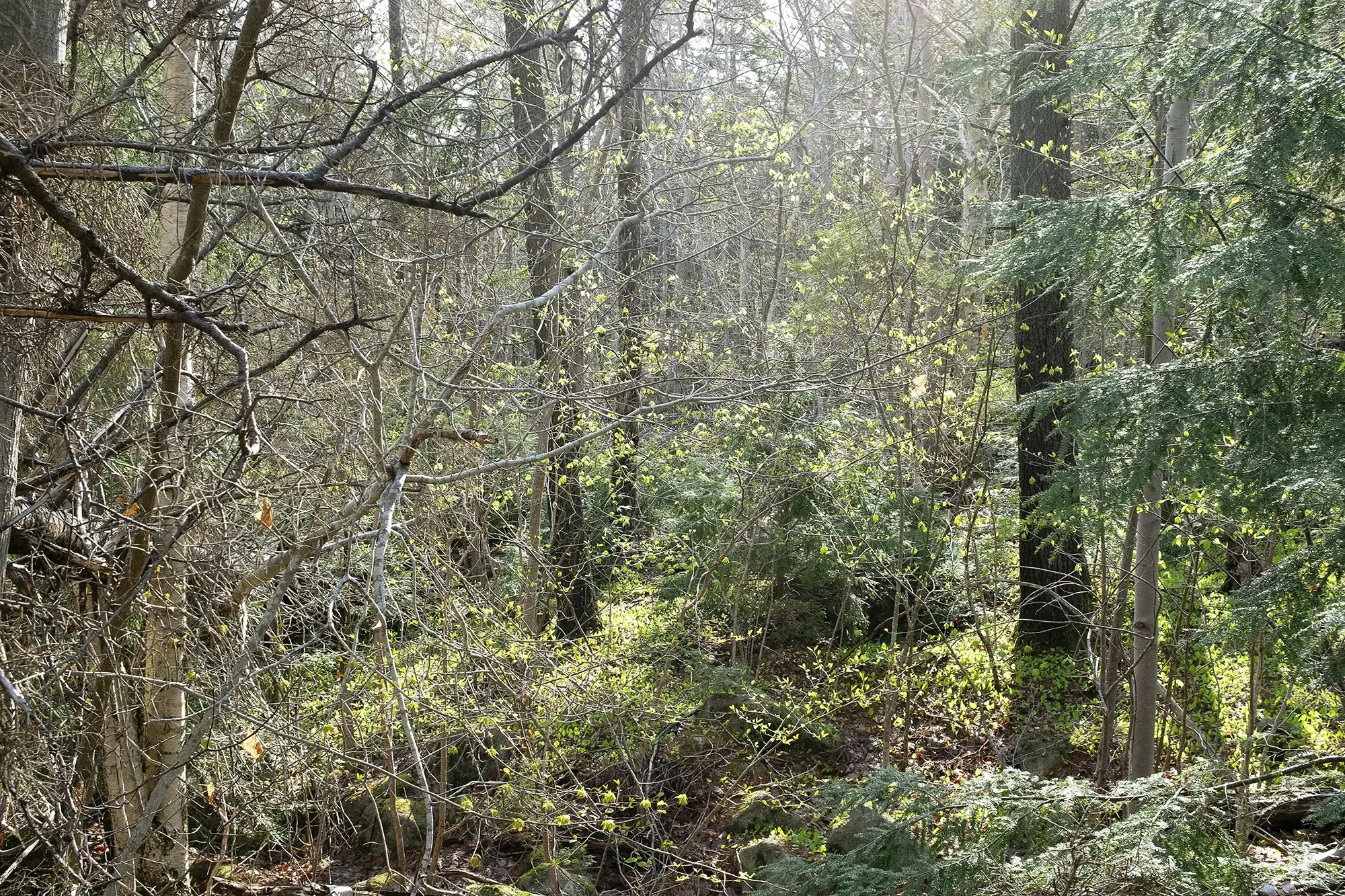
Sir Sanford Fleming Park II, Halifax, Nova Scotia, May 2025, 20x30 inches
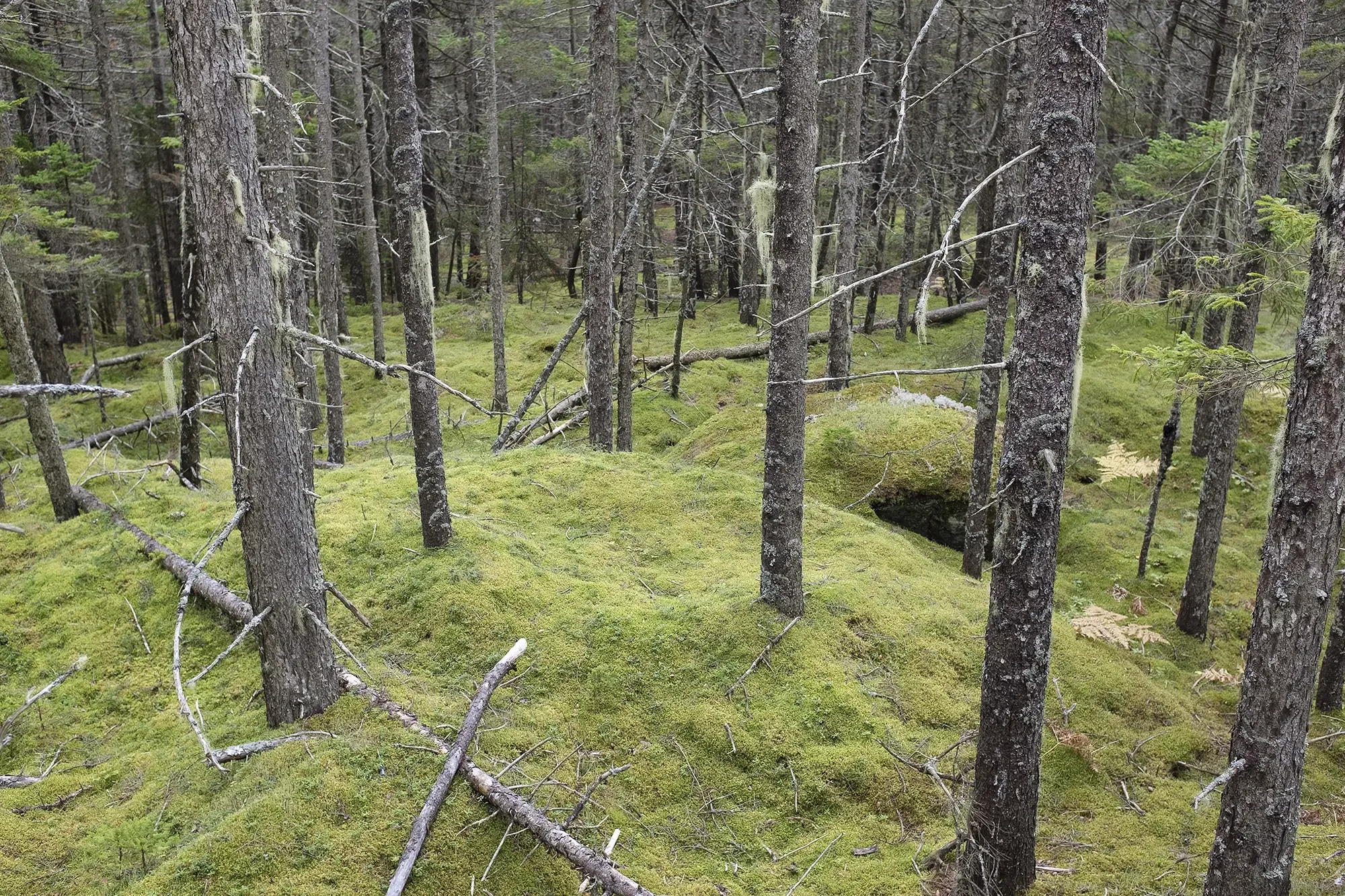
Moss Forest, Barred Island Preserve, Deer Island, Maine, October 2022, 20x30 inches
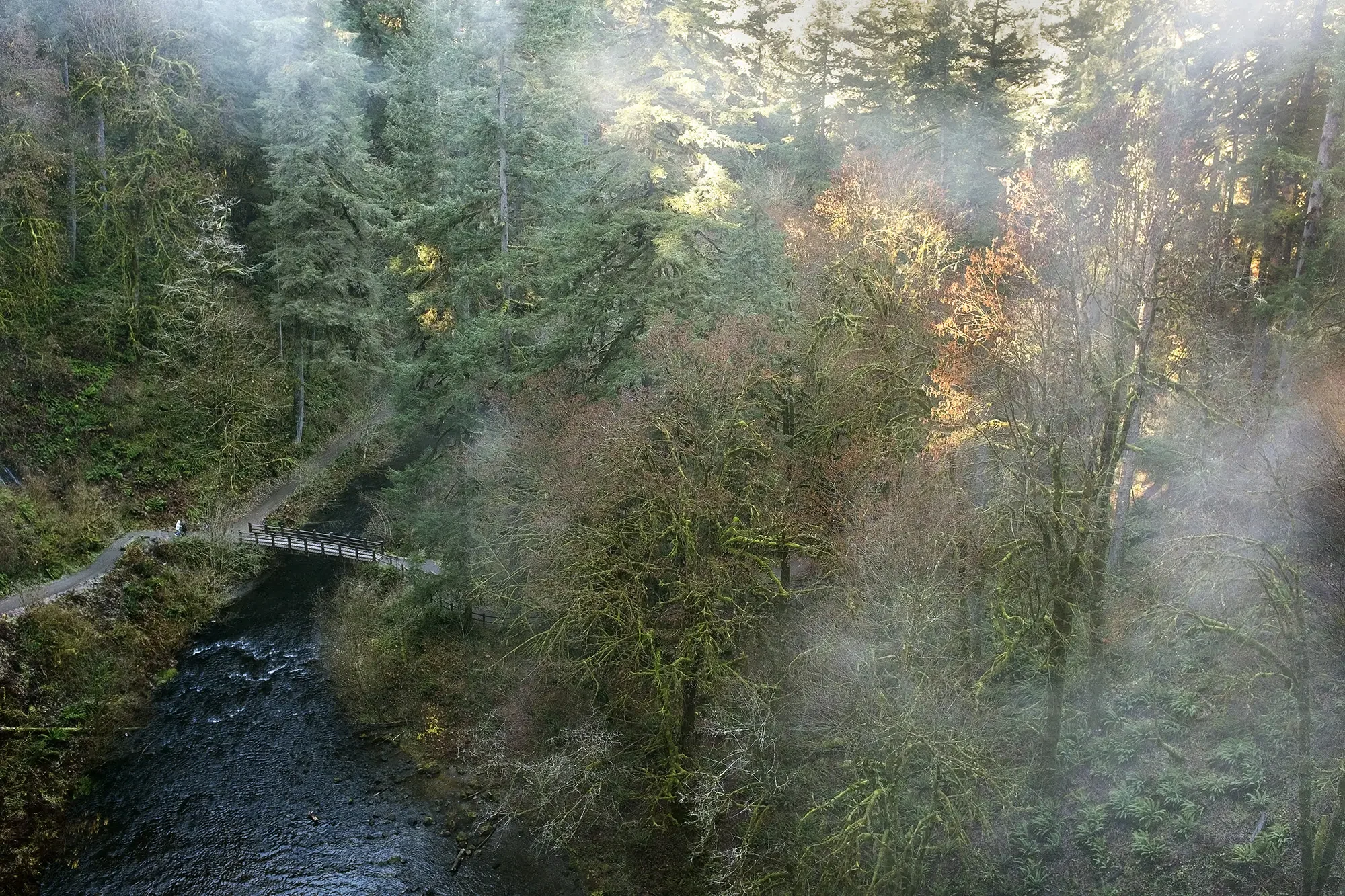
Silver Falls State Park, Sublimity, OR, November 2024, 20x30 inches
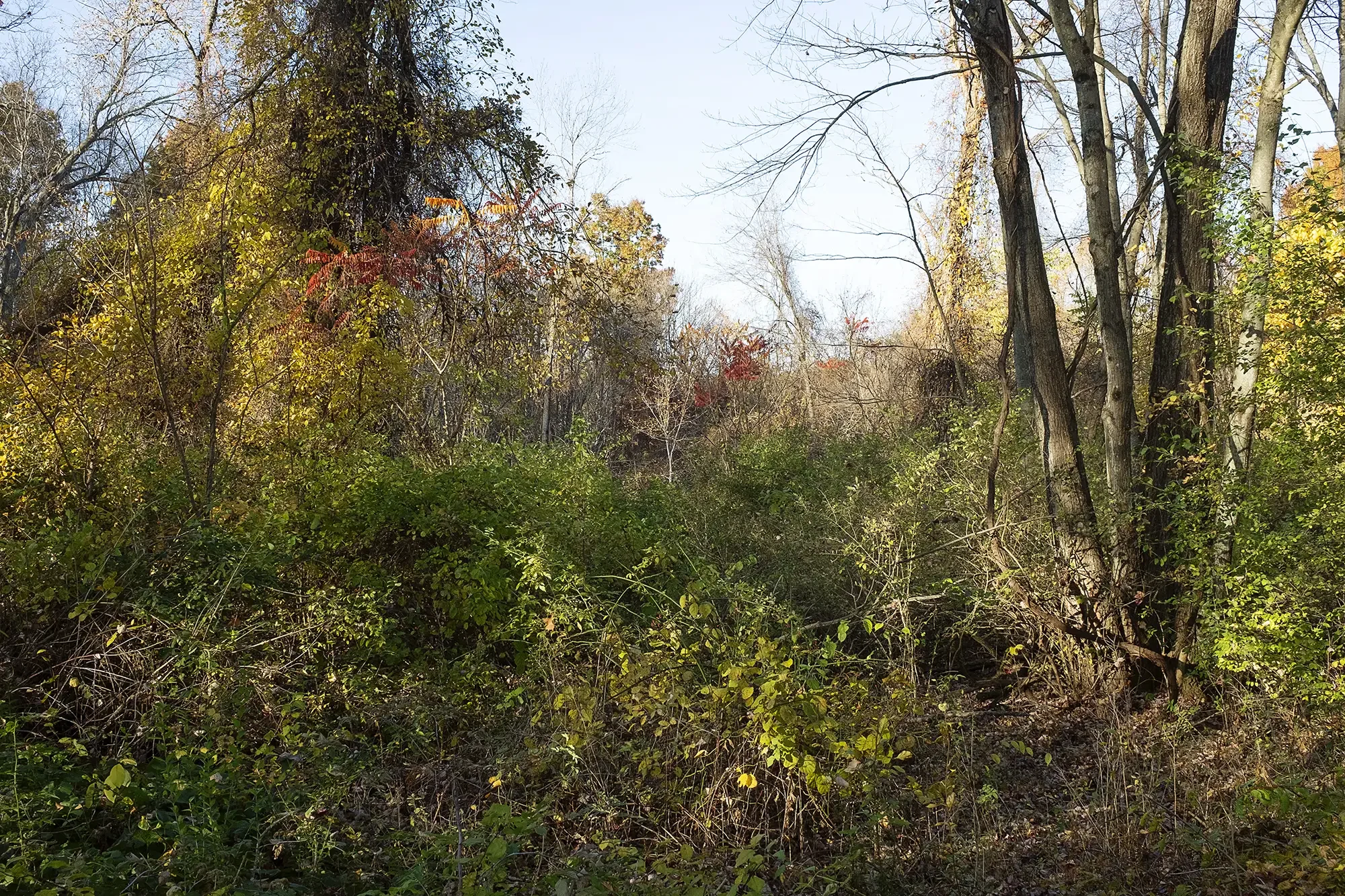
At the edge of the dog park, Easthampton, MA, October, 2024, 20x30 inches
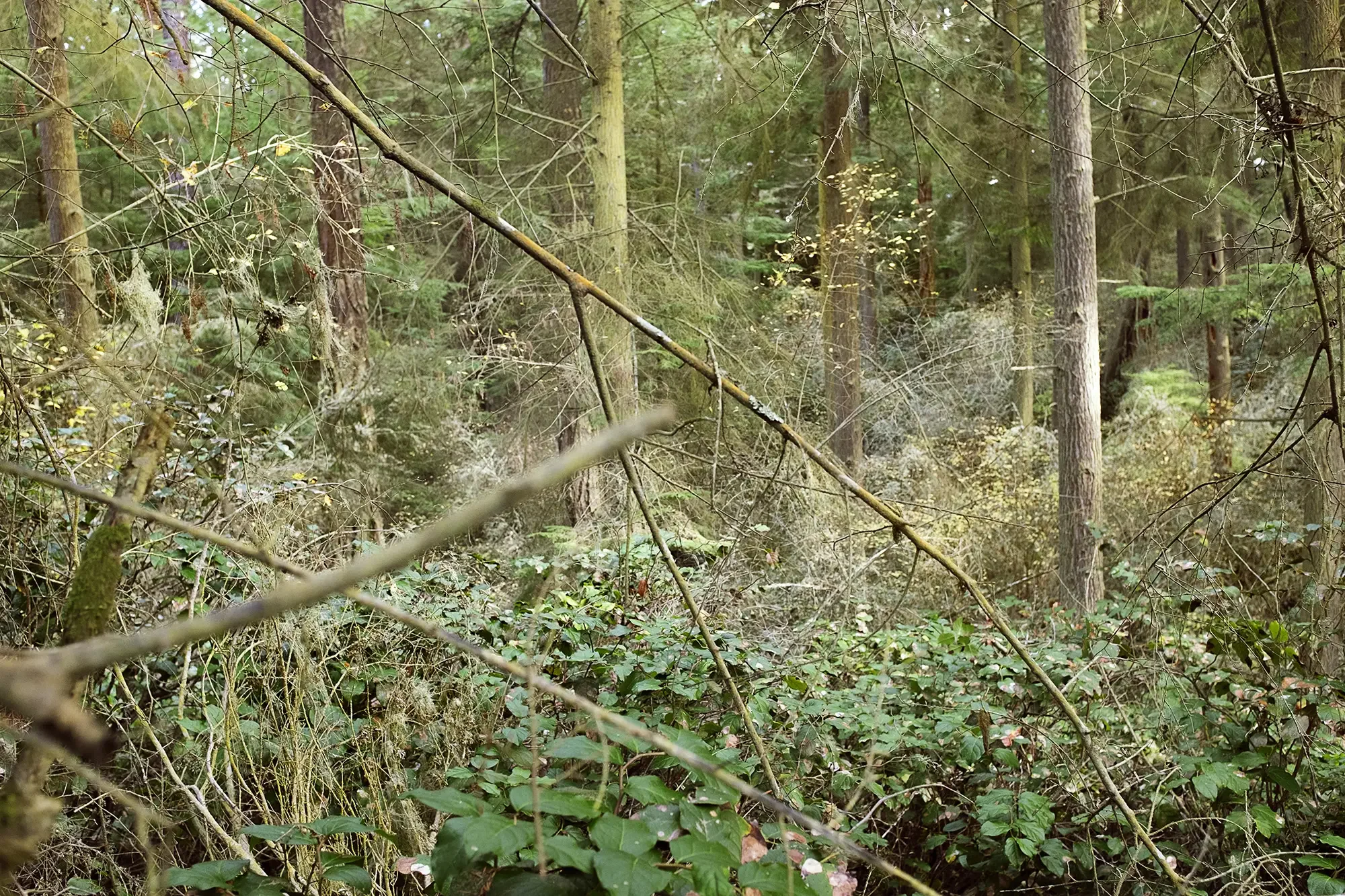
Bluff Trail, Ft. Ebey State Park, Whidbey Island, WA, November 2024. 15x23 inches

Rockery Pond Trail, Ipswich River Wildlife Sanctuary, Ipswich, MA, Spring 2024, 15x23 inches
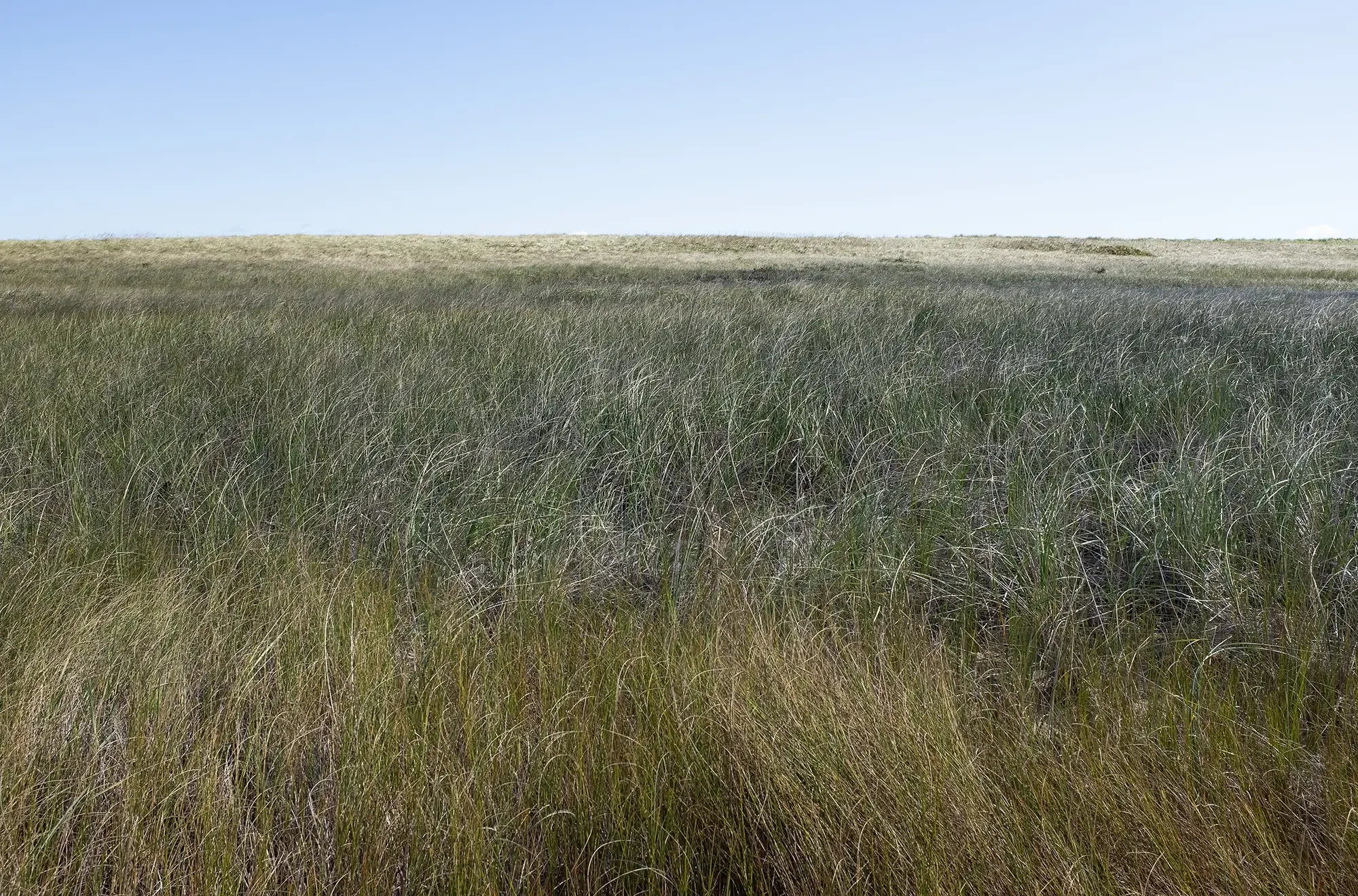
Dune side, Coast Guard Beach, Eastham, MA, October 2023, 15x23 inches
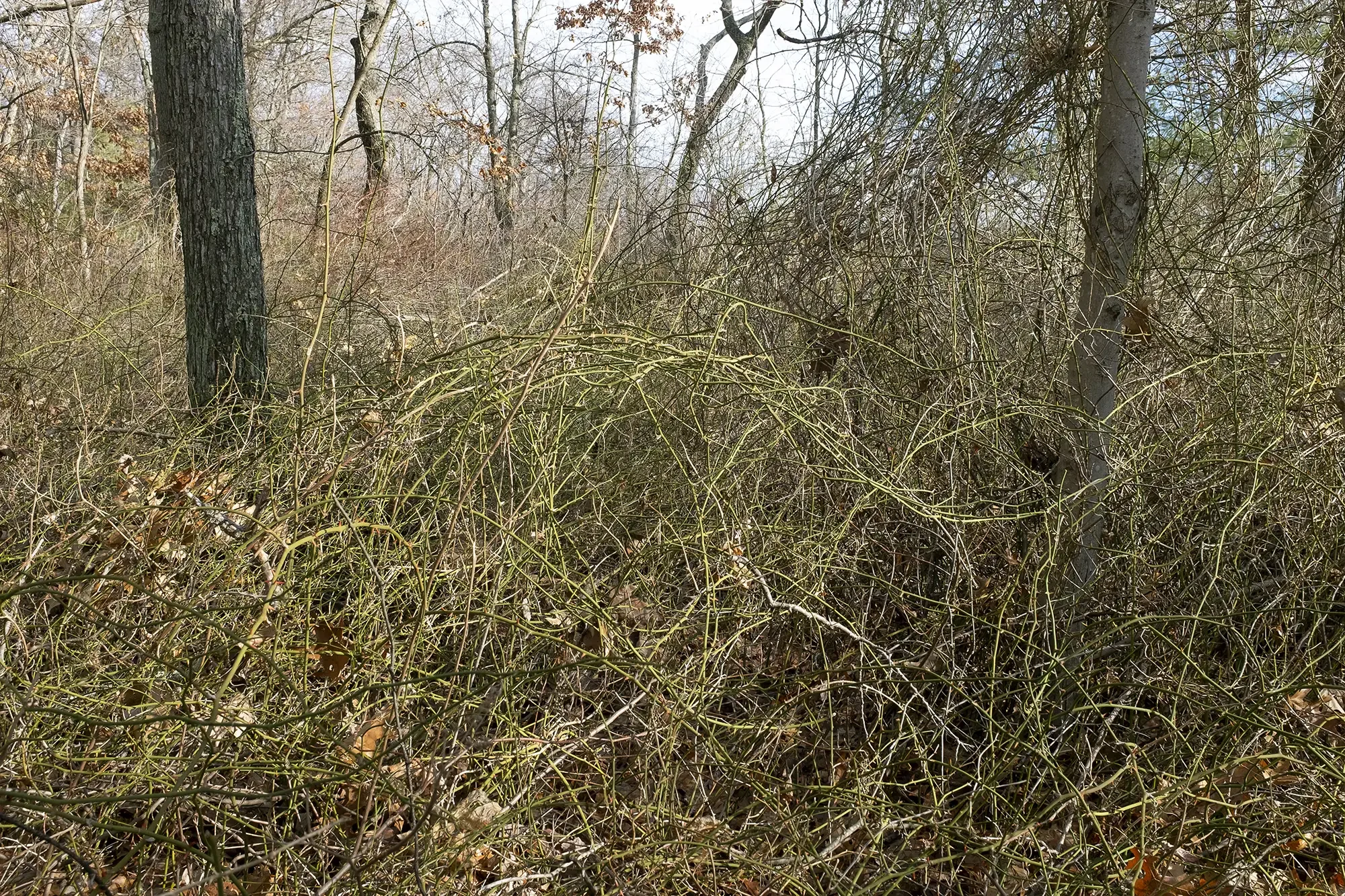
Swamp Trail, The Cove, Auburndale, MA, Winter 2023, 20x30 inches

Sir Sanford Fleming Park, Halifax, Nova Scotia, May 2025, 20x30 inches
Paying Attention: Encounters with the More-than-Human World
Sunday October 19, 2025 2pm
Kingston artist Mary Lang, whose show entangled is in the gallery October 2 - November 2, 2025 in conversation with author and urban naturalist Louise Miller.
Mary Lang’s photographs in entangled are a visual, visceral, atmospheric encounter with the more-than-human world. Louise Miller’s encounters are those of a naturalist, the result of an intimacy with a particular place, a pollinator meadow in the Arnold Arboretum, a 5-month undertaking where she has identified more than 150 non-plant species, including over 100 insects, who are supported by this 1.1 acre urban ecosystem.
Both women are longtime meditators with a love of the natural world. Join them in conversation about how to slow down and pay attention, how to make intimacy with a place a practice, and most importantly, using the power of attention as a portal to the recognition that this world is vividly alive, multi-dimensional, interdependent - where humans have much to learn from the more-than-human world.
Mary Lang has been an exhibiting Boston area artist for more than 20 years. Her photographs are included in collections at the Boston Museum of Fine Arts, the Fogg Museum at Harvard, the DeCordova Sculpture Park and Museum, and the Fidelity Corporate Collection, and in many private collections. She teaches meditation at the Boston Shambhala Center in Brookline. As a gardener, she has had an intimate relationship with the half-acre of her yard and garden in Auburndale, MA for over 40 years.
Louise Miller is an author, professional pastry chef, certified field naturalist and mindful outdoor guide. She lives, bakes, writes and searches for bugs and birds in Boston, MA.
